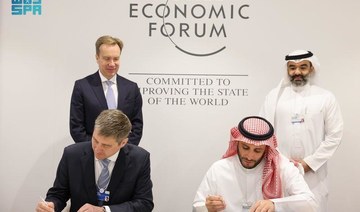WASHINGTON: The new trade agreement unveiled Friday between China and the United States is yet another olive branch from the Trump White House to Beijing, but some skeptics wonder how long the cooperative tone will last.
One thing is sure: The initial measures of the 100-day action plan launched in mid-April by China and the US stand in stark contrast with the anti-Chinese rhetoric Donald Trump used on the campaign trail.
The president has significantly softened his stance, declining last month to declare China a currency manipulator — one of the most strident pledges he made as a candidate.
And, at least at first glance, the new Sino-American trade deal appears to have vindicated this softer approach that is starting to bear fruit.
“We have made...more progress in 40 days than the prior trade negotiators had in this century,” Commerce Secretary Wilbur Ross said recently on Fox News.
The two-page plan of action calls for the lifting of the 13-year embargo Beijing had kept on American beef, as well as gradually opening the Chinese market to certain US financial services.
“It is impossible to overstate how beneficial this will be for America’s cattle producers,” said Craig Uden, president of the National Cattlemen’s Beef Association (NCBA), adding that he was eager to court 1.4 billion new consumers in China.
As important as they may be, these developments are not entirely new. Plans to lift the beef embargo had already been agreed to in principle last September under former President Barack Obama.
The only truly new development was the plan to speed up direct exports of American liquefied natural gas (LNG) to China, delighting some in the American hydrocarbon industry.
“It is a strong signal from both governments that there is a real interest in using LNG produced in the US in China,” Charlie Riedl, director of the Center for Liquefied Natural Gas (CLNG), told AFP.
As for the Chinese, they got the US to lift trade barriers to Chinese exports of cooked poultry, a concession that does not appear to worry US producers.
“It would serve a niche market and we do not think that it would be a problem for our domestic industry,” said Jim Sumner, director of the USA Poultry and Egg Export Council (PEEC).
According to Douglas Paal, a China expert at the Carnegie Endowment for International Peace (CEIP), these achievements are the low-hanging fruit.
“It is not negative but it is not a major step,” he said. “These are the easy steps. The heavy work has not started yet.”
Indeed, the agreement does not touch on theft of intellectual property or the American manufacturing sector, which has suffered most of all from Chinese competition — and which Trump had promised to rescue on his arrival in the White House.
Imports of Chinese-manufactured goods are nevertheless blamed for the colossal US trade gap in goods with China, which stood at $347 billion in 2016. Trump has vowed to reduce it.
“For American manufacturing, there’s not a lot there although I am not terribly surprised,” said Scott Paul of the Alliance for American Manufacturing (AAM).
“Those issues are going to be much harder to solve.”
Paul said the Trump administration might need to get tougher, even threaten sanctions or fresh trade barriers, to win concessions from Beijing.
“The administration may need to take a more aggressive stance,” he said.
Analysts say that, despite its repeated promises on joining the World Trade Organization (WTO) in 2001, China has still not honored promises to open its markets to foreign competition.
“There is a lot of skepticism about whether or not China will really follow through,” said Paal.
US-China trade pact: A Trump triumph or rehashed news?
US-China trade pact: A Trump triumph or rehashed news?

Saudi minister and US counterpart agree road map for cooperation in energy sector

- During meeting in Riyadh, Prince Abdulaziz bin Salman and Jennifer Granholm discuss ways to enhance energy-related collaborations
- They also review Kingdom’s efforts to tackle climate change through local and regional initiatives, including the Saudi and the Middle East green initiatives
RIYADH: The Saudi minister of energy, Prince Abdulaziz bin Salman, and the US secretary of energy, Jennifer Granholm, on Wednesday agreed a road map for cooperation between the countries in the sector.
During a meeting in Riyadh, they also discussed ways in which collaborations might be enhanced in energy-related fields such as carbon management, clean hydrogen, nuclear energy, electricity and renewables, innovation, energy-sector supply chain resilience, and energy efficiency. The two countries signed a Partnership Framework for Advancing Clean Energy in July, 2022.
The officials also reviewed the Kingdom’s efforts to tackle climate change through local and regional initiatives based on a circular carbon economy, including the Saudi and the Middle East green initiatives, the ministry said.
The new road map represents a joint plan for energy cooperation that establishes a timeline and outlines critical projects for collaboration, officials said.
Both sides agreed to engage in various activities to implement the road map, including: exchanges of knowledge on policies related to the joint plans, such as standards and regulatory frameworks; enhancement of joint research and development, especially in the field of new technologies; and the building of human capital through training and exchanges of expertise.
Saudi Center for Space Futures will support lunar mission and $2 trillion global space economy, NASA chief tells Asharq TV

- New center will bring space industries together with government programs, says Bill Nelson on Riyadh visit
- NASA plans to “go back to the moon” with commercial and international partners, agency chief tells Maya Hojeij
RIYADH: The Center for Space Futures, hosted by the Saudi Space Agency, will bring together space industries to send a mission to the moon and build a $2 trillion global space economy by 2035, NASA Administrator Bill Nelson has said.
During a visit to Riyadh this week, the US space agency chief said in a special interview with the Asharq TV channel: “The future of the space center is to bring together space industries, commercial companies, together with the government programs.”
On April 29, the Saudi Space Agency and the World Economic Forum signed an agreement to establish a Centre for the Fourth Industrial Revolution focused on space.
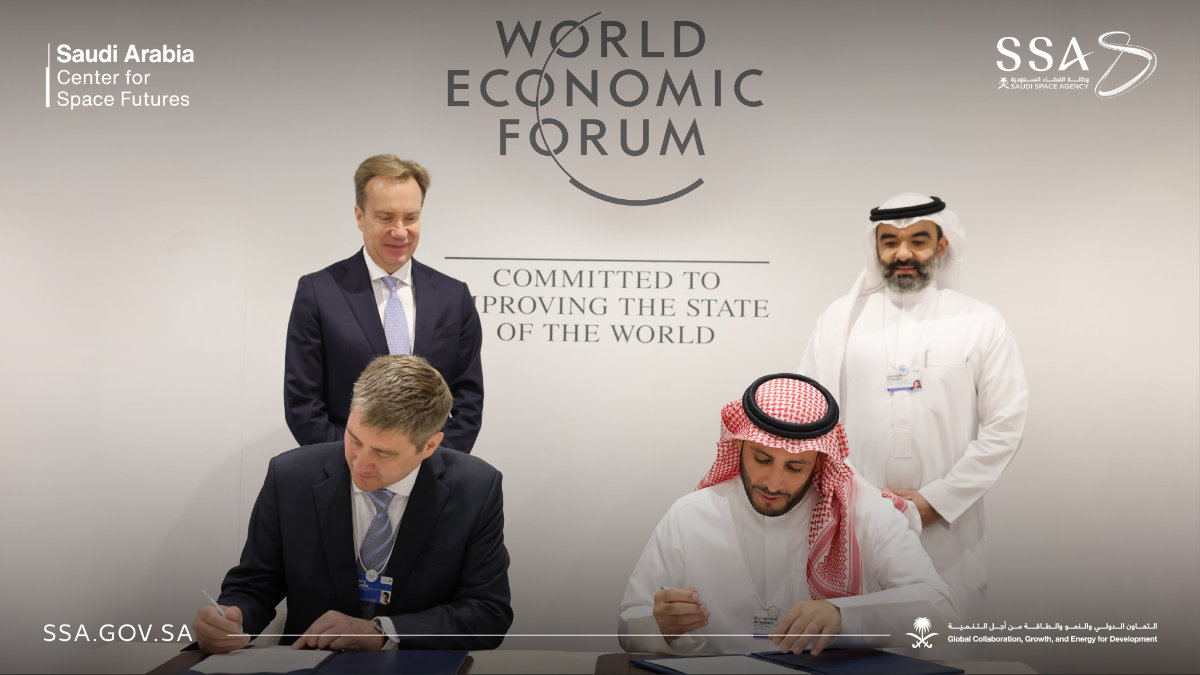
Set to open in the fall of 2024, the Center for Space Futures will be the first center in the C4IR network. It aims to facilitate public-private discussions on space collaboration and contribute to accelerating space technologies.
Nelson told business anchor Maya Hojeij that, after a hiatus of half a century, NASA plans to “go back to the moon.” However, he added: “This time with not only commercial partners, but also with international partners.”
He highlighted that the Center for Space Futures will “bring together those commercial and government programs in order to build a significant space economy.”
Earlier this year, NASA announced that its Artemis II lunar mission will aim to land the first astronauts near the moon’s South Pole in September 2025.

NASA’s administrator added: “We’re talking about a space economy that will be almost $2 trillion dollars by the year 2035 — only a little over a decade away — a significant part of the economic sector of a country.”
Elaborating, he said that the “$2 trillion is worldwide. And that is a lot of startup companies, such as I have seen here in Riyadh today, that are partnering with other companies from around the world that are including incentives by the Saudi government.
“So, we do that in America, and that’s where I mentioned that we’re going back to the moon, this time after a half century, because we were on the moon a half-century ago.
“This time, we’re going back to the moon for a different reason, we’re going to learn, to invent, to create in order to be able to go to Mars and beyond. And this time we go back with commercial enterprises.”
NASA’s Apollo 17, which celebrated its 50th anniversary in December 2022, was the space agency’s sixth and final mission to land people on the moon.
The mission landed on the Taurus-Littrow site, which offered a mix of mountainous highlands and valley lowlands, allowing the crew to collect 741 lunar samples.
Nelson told Asharq’s Hojeij that NASA has partnered with Saudi Arabia on multiple scientific instruments to send Artemis II to the moon for economic benefits and to better understand climate change.
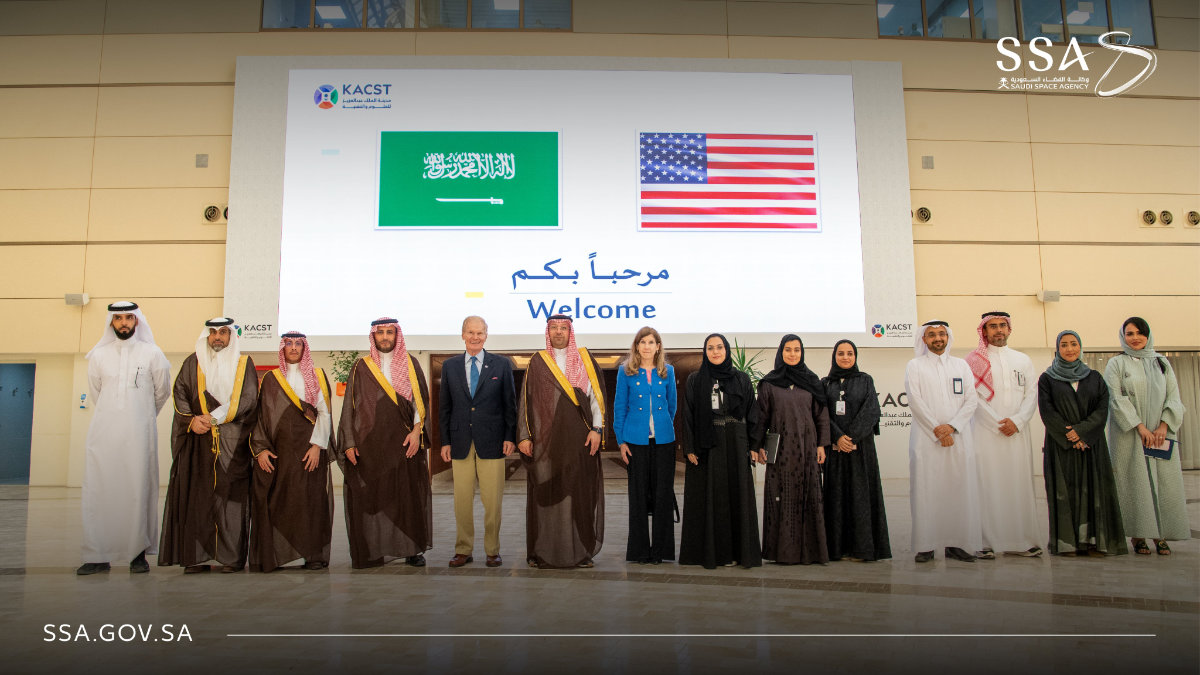
“We have a partnership with Saudi Arabia,” he said. “We’ve already partnered on a number of scientific instruments, but we’ve got a whole way to go.
“We’re going back to the moon and then we’re going to Mars. We are constantly looking down on Earth to help our climate, to better understand what is happening to the Earth, to give very precise measurements of exactly what’s happening there.
“We’re going to coordinate and partner with Saudi Arabia on all of these things.”
Asked about space challenges and how the partnership between Riyadh and Washington sought to address them, Nelson said that debris in space was among the biggest threats to satellites and spacecraft.
“Debris in space is a major problem,” he said. “We are too often having to move our International Space Station to get it out of the way of a piece of space junk that otherwise could hit it.
“Same thing with a lot of our satellites. And so that applies to everybody’s satellites, not just US satellites, Saudi satellites.”
Nelson added that NASA was working with partners “to come up with systems and mechanisms by which we can require the manufacturers of satellites to be able, after their useful life, have a precise landing back through the Earth’s atmosphere to burn up and if any pieces are left over, that they would fall harmlessly in the southern Pacific Ocean.”
Underscoring the importance of these efforts, he said that “whenever something is left in space, it becomes a dangerous projectile that could always ram into something, like our space station.”
The UNU Institute for Environment and Human Security, in its Interconnected Disaster Risks 2023 report, included space debris among its six risk tipping points.
The report, released in February, found that there were 35,150 tracked objects in orbit in 2023. Just 25 percent of these were working satellites while the rest were considered junk, including broken satellites and rocket parts.

As objects in space travel at speeds exceeding 25,000 km per hour, any collision may be “catastrophic,” and even the smallest objects can cause significant damage, according to the same UNU-EHS report.
Asked about the Artemis Accords, which Saudi Arabia signed in 2022, the NASA administrator described it as “a common sense set of principles of the peaceful uses of space.
“For example, in the Artemis Accords, we have that you would come to the aid and assistance of a nation that would have a problem in space,” he said.
“We would develop common elements so that you could help each other out, perhaps remotely in space. But, basically, the thrust of it is the peaceful use of space.”
Saudi Arabia is the 21st country globally and the fourth Middle Eastern nation to sign the Artemis Accords, which set out common principles, guidelines and best practices to ensure safe, peaceful and sustainable space exploration.
Nelson’s visit to the Kingdom is intended to explore future collaboration between the US space agency and key government officials, while also emphasizing the significance of civil space cooperation in the broader US-Saudi relationship
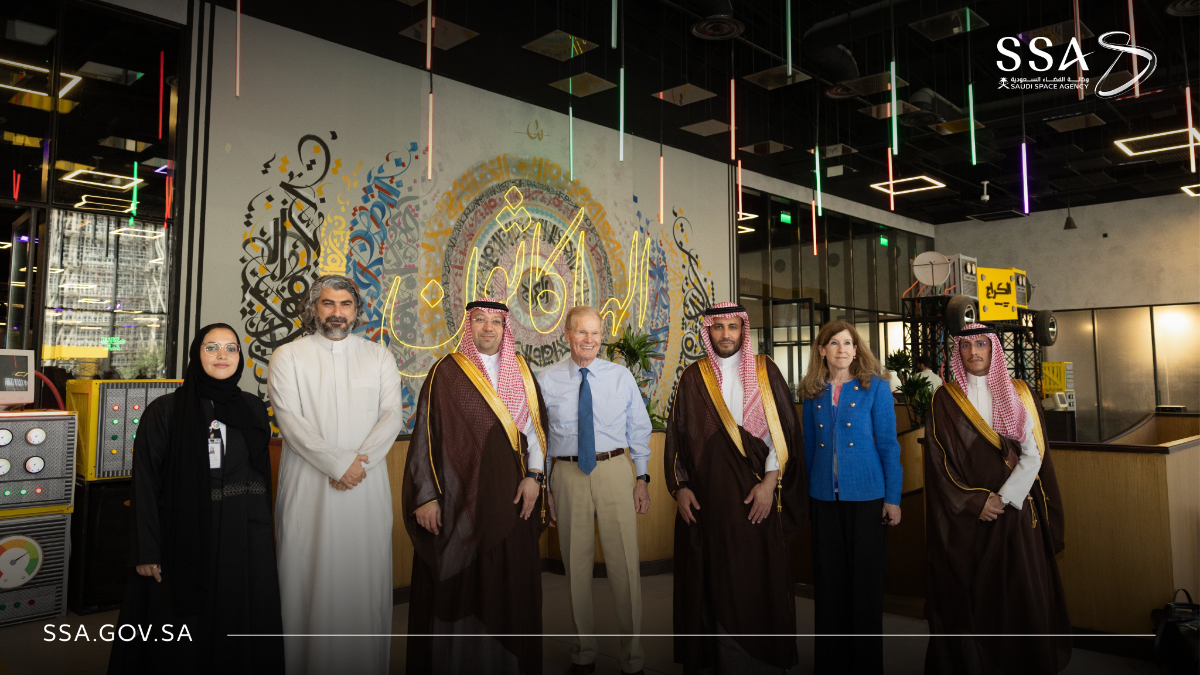
The Saudi Space Agency was launched by royal decree in December 2018 to accelerate economic diversification, enhance research and development, and raise private-sector participation in the global space industry.
Since its launch, the Kingdom’s state-funded space program has struck deals with several of the world’s established space agencies, astronautical companies and top universities to benefit from advanced technological cooperation.
Saudi Arabia’s space industry holds great potential for growth after recording $400 million in revenue in 2022, according to a report by the Saudi Communications, Space and Technology Commission published late last year.
The global space economy is projected to expand to $1.8 trillion by 2035, marking a threefold increase from $630 billion in 2023, according to research published by the World Economic Forum in April.
A growing number of businesses across sectors including agriculture, construction, insurance and climate-change mitigation, are expected to drive the new and expanding space economy.
This rapid surge is being driven by reduced costs and broader accessibility to space-enabled technologies, encompassing various commercial sectors such as communications, positioning, navigation, timing, Earth observation services, tourism and manufacturing.
While state-sponsored investments will remain the cornerstone of the industry, enhanced collaboration between various stakeholders across public and private sectors will be increasingly important to fully realize the sector’s potential in the future.

Speed of Saudi innovation ‘wowing’ UK, says British trade campaign executive

RIYADH: UK delegates at the GREAT Futures Initiative Conference have been “wowed” by Saudi Arabia's business landscape, according to a senior British trade executive.
Speaking during an interview with Arab News, Kate Taylor Tett, director of the GREAT Britain and Northern Ireland Campaign, noted that the event served as a catalyst for change and progress by facilitating cross-sectoral collaboration and dialogue between counterparts from both nations.
She also stressed the fast pace of innovation observed in Saudi Arabia, which has left a strong impression.
“I think what this event has done is put Saudi right at the top of that list. So at the moment, you know, Saudi is the 24th biggest trading partner for the UK,” Tett said.
She added: “I think this top event will really accelerate that because people see it as an opportunity that they need to address right now, not at some point in the future, and hopefully that’s really exciting for businesses.”
Tett also stated that the event attendees were impressed by what they experienced in Saudi Arabia, which led to a shift in their opinions about the market.
“I haven’t spoken to a single person at this event who hasn’t been wowed by what they’ve seen when they’ve come here. I think their opinions have shifted, and that in itself is a huge opportunity,” she said.
Tett also explained that the event is not just a two-day gathering; it is a program that extends over a year and involves various collaborations between UK businesses and counterparts in Saudi Arabia.
“I know there’ll be lots of sort of cross-fertilization in that way, so this, these two days are very much a catalyst for initially a year-long program. But I think what you’ll see is that then that becomes a leap pad for things beyond that,” she said.
Commenting on the UK-Saudi partnerships, Tett emphasized the significance of innovation in collaboration between countries that are actively engaged in progressive undertakings.
She also stressed the fast pace of innovation observed in Saudi Arabia, which has left a strong impression.
“Everybody I’ve spoken to here has just been wowed by the pace of innovation in Saudi. And clearly bringing that innovation together and companies working together just creates these huge opportunities which have an economic benefit on both sides of the partnership,” Tett underscored.
She added: “I think what really hit me has been the energy and the positivity of everybody that I’ve met. I spent some time working in the world of startups, and I think Saudi feels like a huge startup. Everything feels possible.”
She concluded by expressing her enthusiasm among the participants and describing their collective drive to make progress as “really infectious.”
Saudi property forum to enhance local real estate supply chain access

RIYADH: Saudi real estate firms are poised to gain improved access to the supply chain with major industry players set to gather in Riyadh for an event designed to enhance cooperation and forge partnerships.
Under the patronage of the Minister of Municipal and Rural Affairs and Housing Majid bin Abdullah Al-Hogail, the National Housing Co. will host the Real Estate Supply Chain Forum from May 20 to 21 at the JW Marriot Hotel Riyadh, with the aim of fostering the growth of the property sector.
The event will gather a diverse array of local and international companies, consultants, contractors, and manufacturers to explore collaborative opportunities aimed at delivering integrated housing projects focused on quality and affordability, according to the Saudi Press Agency.
The forum will also provide promising investment opportunities, facilitate the signing of investment agreements and strategic partnerships, establish new standards, and find innovative solutions for real estate development.
Additionally, the gathering will unveil the latest agreements to secure supply chains between the NHC and a range of local and global partners.
Several scheduled dialogue sessions will showcase the latest technologies in the building materials industries. These talks will facilitate the exchange of expertise between local and international companies, aiming to enhance the supply chain network.
On May 5, the NHC signed a deal with China’s leading firm, CITIC Construction Group, to establish an industrial city and logistic zones for building materials, comprising 12 factories, with the objective of securing supply chains for the NHC’s housing projects.
NHC CEO Mohammad Al-Buty finalized the deal during Al-Hogail’s official visit to China.
The NHC said the agreement with the Chinese construction group is part of its efforts to secure supply chains for its housing projects and ensure their timely completion and high quality.
The Saudi company highlighted that the deal includes the construction of 12 factories specializing in building materials, harnessing Chinese expertise, and involving local factories to uplift business standards.
It added that the agreement also aims to draw top-tier service providers across various company sectors, its subsidiaries, and other projects.
The firm pointed out that the pact is expected to maximize the economic and developmental impact of the real estate sector in the Kingdom, develop housing projects, enhance their quality, and promote national transformation in the construction sector through these industrial cities and logistic zones.
British Airways to resume Jeddah operations, enhancing UK-Saudi connectivity
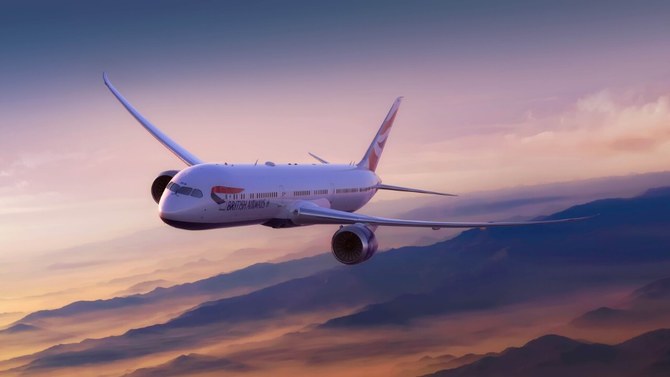
RIYADH: British Airways is set to resume operations in Jeddah after a five-year hiatus, aiming to enhance connectivity to the Kingdom, the airline said.
Announced at the GREAT Futures Initiative Conference held in Riyadh, the route is scheduled to commence on Nov. 4, offering year-round service to the Saudi city from London Heathrow, according to a press release.
The new service, operated by the Boeing 787 fleet, will total four flights per week, and sit alongside the daily operations between Riyadh and Heathrow.
Speaking at the event, Colm Lacy, British Airways’ chief commercial officer, said: “We have a long history of connecting families, friends and businesses in the Kingdom of Saudi Arabia with our home in London.”
He added: “There are significant opportunities for businesses in both countries, so we’re pleased we can re-build our connectivity and strengthen links between the two kingdoms.”
In a joint statement, Mazen Johar, CEO of Jeddah Airports, and Majid Khan, CEO of Saudi Air Connectivity Program, said: “The return of the UK’s flag carrier to Jeddah, with new flights from London Heathrow, will further strengthen our air connectivity from the capital.”
They added: "With British Airways’ leading network in the UK, Europe, and onwards to North America, travelers can experience an untouched wonder, Saudi Arabia, through one of the leading global carriers, further supporting our growing inbound tourism and aviation market.”
Earlier this week, the Kingdom’s General Authority of Civil Aviation released a statement revealing that an ambitious roadmap outlining Saudi Arabia’s tenfold growth in the aviation sector into a $2 billion industry is on track to be unveiled at the Future Aviation Forum in May.
The plans encompass the business jet segment, including charter, private, and corporate aircraft, and aim to bolster Saudi Arabia’s development as a global high-value enterprise and tourist destination, the statement noted at the time.
It also highlighted that the plan comes after Saudi Arabia revised its 2030 tourism target upward from 100 million to 150 million visitors in October 2023.
Also earlier this week, the Kingdom’s Minister of Commerce announced that partnerships between Saudi Arabia and the UK encompass over 60 initiatives across 13 sectors, with trade between the countries up by a third since 2018.
During the opening remarks of the GREAT Futures Initiative Conference, Majid Al-Qasabi noted that bilateral trade surged between 2018 and 2023, exceeding £79 billion ($99.12 billion).
With over 1,100 active licenses for UK investors, developments such as the giga-projects in the Kingdom and policy reforms are enhancing business opportunities, the minister emphasized.




